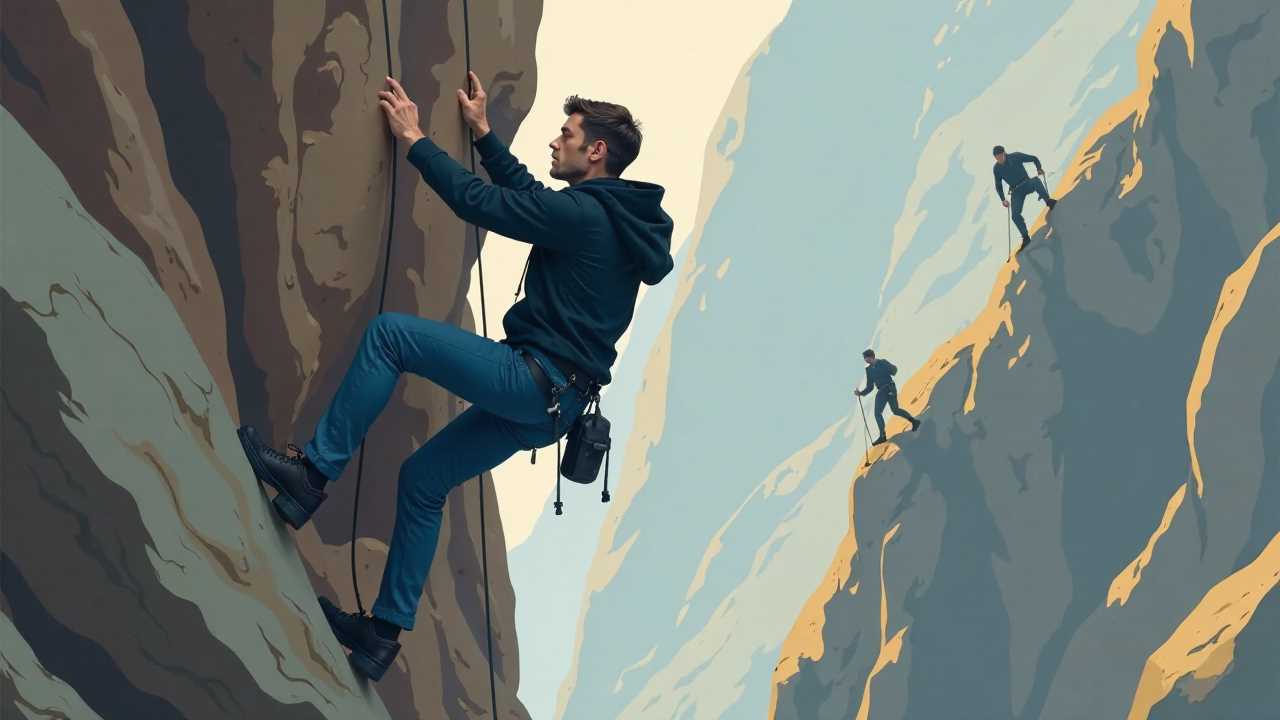
Understanding Mobility for Rock Climbers
Mobility is a fundamental aspect of rock climbing that encompasses flexibility, stability, range of motion, agility, strength, and recovery. For climbers, possessing optimal mobility is not merely advantageous; it is vital for performance and injury prevention. As we navigate the challenges of climbing, understanding how to enhance our mobility can lead to significant improvements in our climbing techniques and overall physical health.
The Importance of Flexibility in Climbing
Flexibility is the ability of our muscles and joints to move through their full range of motion. For rock climbers, flexibility plays a critical role in reaching holds, maintaining balance, and executing complex movements. Tight muscles can limit your reach and hinder your ability to position your body effectively on the wall.
To improve flexibility, we recommend incorporating a variety of stretching routines into your training regimen. Dynamic stretches, such as leg swings and arm circles, can be particularly effective as they prepare your muscles for the demands of climbing. Static stretches, like the butterfly stretch and hamstring stretch, should be performed post-climbing to enhance flexibility and promote recovery.
Stability: The Foundation of Climbing
Stability refers to the ability to maintain control of your body while climbing. It is essential for executing precise movements and maintaining balance on challenging routes. A stable core allows climbers to transfer energy efficiently from their legs to their arms, resulting in smoother and more controlled movements.
To develop stability, we suggest incorporating core-strengthening exercises into your routine. Planks, side planks, and stability ball exercises can significantly enhance your core strength. Additionally, practicing balance exercises, such as single-leg stands or yoga poses like the tree pose, can improve your overall stability on the wall.
Range of Motion: Expanding Your Reach
Range of motion is the distance and direction your joints can move. A greater range of motion allows climbers to reach holds that may otherwise be out of reach, enabling them to climb more efficiently. Improving your range of motion requires a combination of flexibility training and strength exercises.
Incorporating mobility drills, such as hip openers and shoulder dislocates, can help increase your range of motion. These exercises not only improve flexibility but also prepare your joints for the dynamic movements encountered while climbing.
Agility: Reacting with Precision
Agility is the ability to move quickly and change direction with ease. For climbers, agility is crucial for navigating complex routes and responding to unexpected challenges on the wall. Developing agility involves training your body to react swiftly and efficiently.
Plyometric exercises, such as box jumps and lateral hops, can enhance your agility. Incorporating agility ladder drills can also improve footwork and coordination, essential skills for effective climbing.
Building Strength for Climbing Success
Strength is a fundamental component of climbing that directly impacts your ability to ascend challenging routes. Climbers require a combination of upper body, lower body, and core strength to pull themselves up and maintain control on the wall.
To build strength, we recommend a well-rounded strength training program that includes exercises such as pull-ups, push-ups, squats, and deadlifts. Focusing on compound movements that engage multiple muscle groups will yield the best results. Additionally, incorporating climbing-specific strength training, such as fingerboard training, can enhance grip strength, a critical factor in climbing performance.
The Role of Recovery in Mobility Training
Recovery is often overlooked but is vital for maintaining mobility and preventing injuries. After intense climbing sessions or workouts, your muscles need time to repair and rebuild. Neglecting recovery can lead to tightness, decreased flexibility, and increased risk of injury.
Incorporating active recovery techniques, such as foam rolling and gentle yoga, can promote blood flow and alleviate muscle soreness. Prioritizing rest days and ensuring adequate sleep are also essential components of a successful recovery strategy.
Creating a Comprehensive Mobility Training Program
To master mobility for rock climbing, we must create a comprehensive training program that addresses flexibility, stability, range of motion, agility, strength, and recovery. Here’s a sample weekly program to guide your training:
Day 1: Flexibility and Recovery
- Dynamic warm-up (15 minutes)
- Static stretching routine (30 minutes)
- Foam rolling (15 minutes)
Day 2: Strength Training
- Pull-ups (3 sets of 8-10 reps)
- Squats (3 sets of 10-12 reps)
- Core exercises (planks, Russian twists)
Day 3: Agility and Stability
- Agility ladder drills (20 minutes)
- Balance exercises (single-leg stands, yoga poses)
Day 4: Climbing Session
- Focus on technique and movement
- Incorporate mobility drills before and after climbing
Day 5: Active Recovery
- Gentle yoga or light cardio (30-45 minutes)
- Foam rolling and stretching
Day 6: Strength Training
- Push-ups (3 sets of 10-12 reps)
- Deadlifts (3 sets of 8-10 reps)
- Fingerboard training (if applicable)
Day 7: Rest Day
- Prioritize rest and recovery
Mastering mobility for rock climbers is a multifaceted endeavor that requires dedication and a strategic approach. By focusing on flexibility, stability, range of motion, agility, strength, and recovery, we can enhance our climbing performance and reduce the risk of injury. Implementing a comprehensive training program tailored to these components will not only improve our climbing abilities but also contribute to our overall physical well-being. Embrace the journey of mobility training, and watch as your climbing skills reach new heights.
 Mobility trainingHome Fitness RecoverySports Injury PreventionPersonal Physical TherapyOrthopedic SolutionsPrivacy PolicyTerms And Conditions
Mobility trainingHome Fitness RecoverySports Injury PreventionPersonal Physical TherapyOrthopedic SolutionsPrivacy PolicyTerms And Conditions
